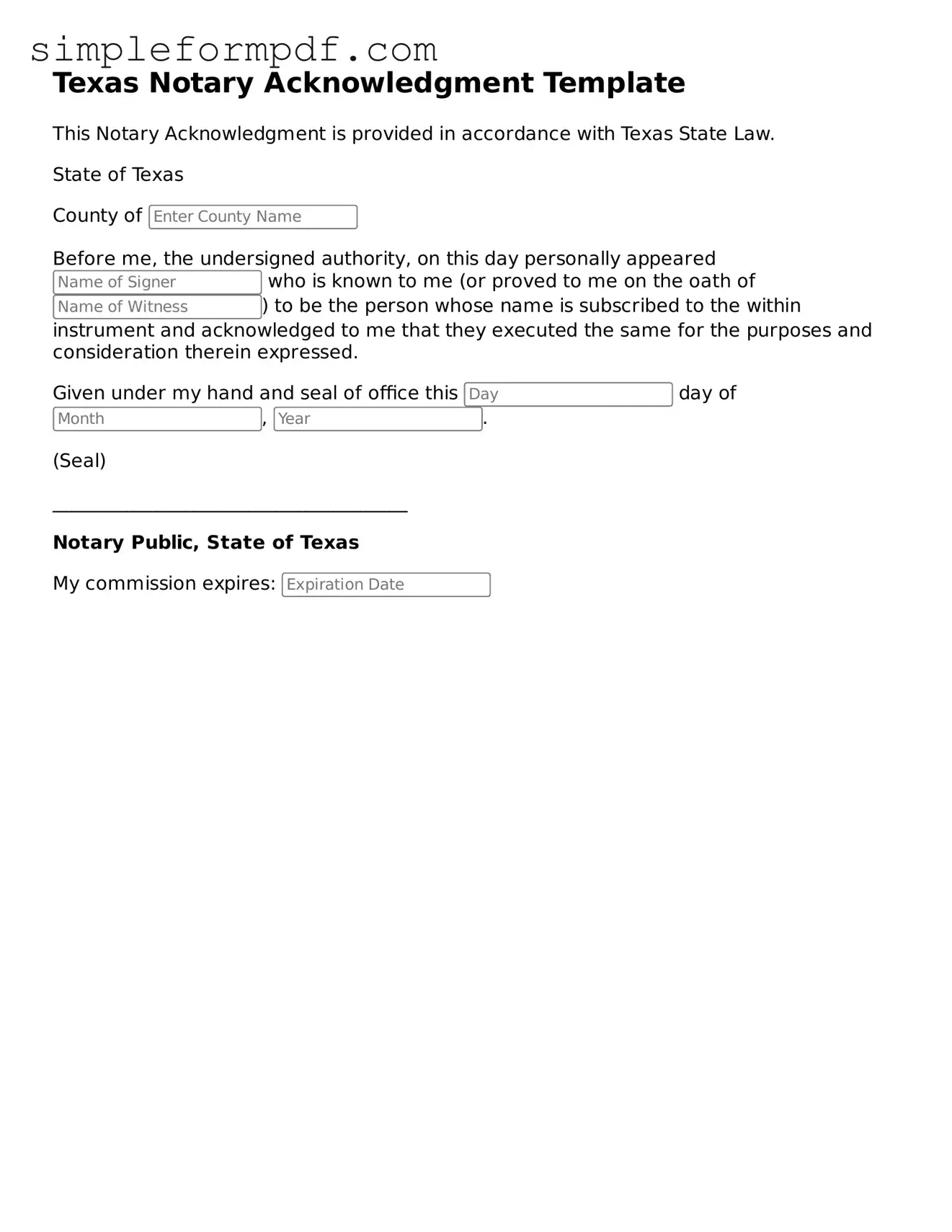Free Notary Acknowledgement Form for the State of Texas
The Texas Notary Acknowledgement form is a legal document that verifies the identity of a signer and confirms their willingness to sign a document. This form is essential for ensuring that transactions are legitimate and properly executed. If you need to complete this form, take action now by clicking the button below.
Launch Editor
